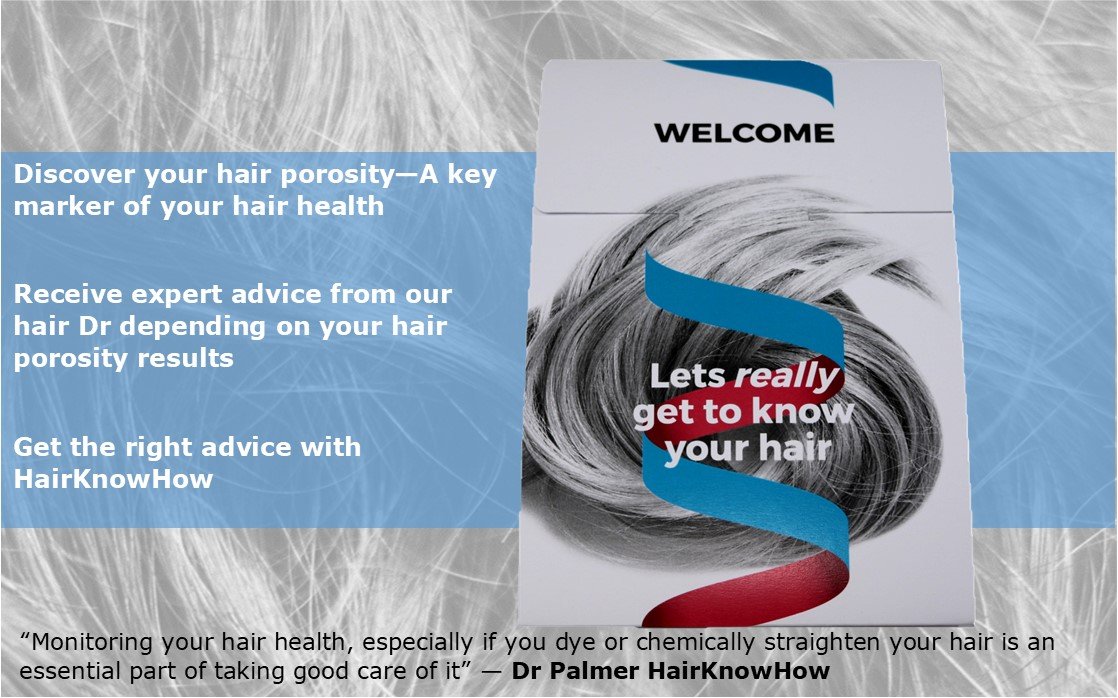Our hair plays a significant role in our appearance, so maintaining strength and health is crucial. You can use a hair moisture test to assess the condition of your hair and take the appropriate action to maintain its health. Making sure that the right amount of moisture is present in the hair is one of the most crucial aspects of maintaining healthy hair.
In this article, we’ll look at how a hair moisture test works, why it matters and how it can help improve the condition of your hair.
What is Hair Moisture Test
The amount of water in your hair is referred to as its moisture. Like your skin, your hair needs a certain amount of moisture to stay strong and healthy. You can take the necessary actions to maintain the health of your hair by using a hair moisture test to find out how much moisture is present in your hair.
Most DIY hair moisture tests, such as the ones described below, are highly subjective and not accurate. In most cases, the amount or degree of moisture is inferred.
The best approach is to get either the Complete Hair Analysis or the Hair Porosity Test by HairKnowHow. HairKnowHow accurately tests your hair porosity which is a superior health metric.
Understanding the Science Behind Hair Moisture
There are numerous products available that claim to be able to keep hair moist.
We must first understand the composition of hair in order to comprehend the science behind hair moisture.
Keratin, a protein, makes up the majority of hair. Amino acids, the components of proteins, are what make up keratin. The amino acids in your hair expand in volume when they come into contact with water, which causes the hair shaft to swell.
The three layers that make up hair are the cuticle, cortex, and medulla, all of which are made of keratin.
The cuticle, the hair's outermost layer, protects hair from damage.
The cortex, the middle layer of the hair, is what gives the hair its strength and structure and is responsible for its texture, curl or wave.
The medulla, the hair's deepest layer, is sometimes missing altogether.
For strength to be maintained and damage to be avoided, hair needs a specific amount of moisture.
The cuticles of the hair become rough and brittle when it is overly dry, which leads to breakage and split ends.
On the other hand, hair that is overly hydrated loses its volume and bounce and becomes weighed down.
To find out how much moisture your hair contains and to ensure that it is maintained in a healthy and attractive state, use a hair moisture test or porosity test.
Why is it Important to Measure Hair Moisture
Your hair must have the proper moisture balance to remain strong and healthy. Too much dryness can cause hair to become brittle and break easily. On the other hand, overly hydrated hair may lose its volume and become weighed down. You can monitor your hair's moisture content and take the necessary precautions to maintain its health by regularly testing it.
Understanding the Importance of Hair Moisture
Moisture is one of the most important aspects of hair care. Moisture is what keeps your hair healthy, shiny, soft but strong and guards against split ends.
Hair with the ideal moisture is easier to style and looks more vibrant.
That’s why it’s so important to understand the importance of hair moisture and how to keep your hair properly hydrated.
The Role of Moisture in Healthy Hair
Your hair needs moisture to stay healthy because it keeps the cuticles smooth and guards against damage. The cuticles of hair lie flat when properly moisturised, giving it a smooth and shiny appearance.
The cuticles of dry hair can become rough and brittle, causing breakage and split ends and prone to frizz.
Water helps promote the formation of hydrogen bonds and helps create chemical “bridges” between individual keratin strands. These hydrogen bonds can break and reform, which helps to make hair stretchy and increases its overall strength.
When hair is fully wetted (containing too much water), it swells, increasing in diameter. This water swelling causes the cuticle to stick out from the hair shaft making it more likely to be damaged from brushing etc.
When hair is too dry then the is a reduction in hydrogen bonds linking the keratin fibres together. This weakens hair and makes it less flexible. Finding the right moisture balance is key to healthy, strong hair.
The Effects of Over-Drying and Over-Hydrating Hair
When it comes to hair moisture, there can be such a thing as too much of a good thing.
Over-dried hair becomes brittle and more likely to break, develop split ends, and become frizzy and challenging to style.
Over-drying hair is often the result of using heat styling tools or chemical colouring treatments on already dry hair. This can strip away natural oils and leave hair feeling brittle and straw-like. If you must use heat styling tools, be sure to use a heat protectant spray beforehand and avoid overdoing it. Also, pretreat your hair with coconut oil before visiting the salon for a colour treatment and let your hair air dry whenever possible, and avoid using hot water when shampooing or conditioning.
However, excessive hydration can cause hair to lose its volume and become weighed down. In addition to making the styling more difficult, overhydrating the hair can result in product buildup.
How to Perform a Hair Moisture Test
A hair moisture test can be done in a number of ways. The touch, stretch, wrap, and porosity tests are some of the most popular techniques. We'll go into more detail about each method in this section.
The best option is the HairKnowHow Hair Porosity Test, it's accurate and scientific, and you’ll get useful tips and advice.
Common Tools Used for Hair Moisture Testing
Even though you can perform a hair moisture test with just your hands, there are a few tools that can help you get a more precise reading. The moisture in your hair can be measured using a hair moisture metre. A hair hydration test strip is an additional choice; it functions by altering colour according to the amount of moisture in your hair.
The best option is the Hair Porosity Test from HairKnowHow.
Numerous Techniques for Measuring Hair Moisture at Home
The moisture levels in your hair can be checked using various techniques. Here, we'll talk about the most popular methods.
The Touch Test
The touch test is a simple way to check the moisture levels in your hair. All you need to do is take a small strand of hair between your fingers and lightly squeeze. If the hair strand feels dry and brittle, then it's likely that your hair is lacking moisture. On the other hand, if the strand feels soft and pliable, then your hair is most likely well-moisturized. If the hair feels heavy, it might be overly hydrated.
The Stretch Test
The stretch test is a quick and easy way to determine the moisture content of your hair. To do the test, simply take a small strand of hair and gently stretch it between your thumb and forefinger. If the hair stretches without breaking, then it is moisturized. If the hair breaks or snaps, then it is dry.
This is a very subjective test and is not terribly reliable. Hair scientists do use similar tests, but they typically use sophisticated scientific equipment to monitor both the stretching of the hair and the amount of force being applied.
The Wrap Test
There seem to be two variants of this test that people perform at home. These are described below. We recommend neither test as they are not scientific and are very subjective.
To do the wrap test, you’ll need a clear plastic bag and a towel. First, dampen your hair with water, then put it into the plastic bag. Next, wrap the towel around your head to secure the bag in place. Leave the bag on for about 30 minutes, then remove it and check the condition of your hair. If your hair feels dry, frizzy, or crunchy, it needs more moisture.
The second method involves trapping a small section of hair around your finger to perform the wrap test. The moisture content of the hair is balanced if it coils tightly and smoothly. If the hair unravels or coils up loosely, it might be dehydrated.
Remember, neither of these tests is reliable or informative. The best test if you are interested in testing your hair health or porosity at home is a HairKnowHow Hair Test.
The Porosity Test
There are several of these test methods you can do at home; one is described below. It’s not accurate or scientific at all. But we have detailed the method all the same for those of you that want to give it a try.
First, fill the bowl with room-temperature water. Then, take a single strand of hair from your head and lower it into room-temperature water.If your hair sinks immediately and doesn’t float, that means it’s low porosity. A hair strand with low porosity and a good moisture balance will float. If it floats for a few seconds before sinking, that means it’s medium porosity. And if it floats on the surface of the water without sinking, that means its high porosity.
To reliably discover your hair porosity, we recommend either HairKnowHow’s Hair Porosity Test or The Complete Hair Analysis. Both are accurate and scientific tests that will inform you of both your hair health and porosity.
Maintaining Proper Moisture Levels in Your Hair
You can take the necessary actions to maintain proper moisture levels once you have established the amount of moisture or porosity level in your hair. This section will cover some advice for maintaining healthy, hydrated hair.
Use a mild shampoo and conditioner with oils. Harsh cleansing shampoos can strip away natural oils, leaving hair dry and brittle. Look for products that are sulfate-free and designed for sensitive scalps or colour-treated hair.
Avoid hot showers. While it may feel good at the moment, hot water can actually remove moisture from your hair. Stick to lukewarm or cool water when cleansing your locks.
Use a leave-in conditioner. This can help to add moisture back into your hair after washing and protect it from heat styling and other damaging factors.
Deep condition regularly. Once or twice per week, use a deep conditioning treatment to infuse moisture and hair oils into your hair. This is especially important if you have dry or damaged hair.
Avoid chemical colouring and heat treatments.
By following these tips, you can help to keep your hair properly moisturized and healthy!
Use a Gentle Cleanser
Maintaining the health of your hair requires using a gentle cleanser. Use gentle shampoos rather than abrasive ones that can strip your hair of its natural oils. Choose a sulfate-free shampoo instead so that it can clean your hair without robbing it of its moisture.
Condition Regularly
Regular conditioning is crucial in ensuring proper moisture levels in your hair. Your hair will stay hydrated and have smooth cuticles with the aid of a good conditioner. A weekly deep conditioning treatment can also assist in rehydrating dry, damaged hair.
Depending on your hair type, you may need to condition it every day or just a few times a week. Be sure to read the labels on your conditioner to find one that is right for your hair type.
Use a Leave-In Conditioner
A leave-in conditioner is a fantastic way to give your hair more moisture. Leave-in conditioners are designed to add moisture and shine to your hair while also protecting it from heat damage and environmental stresses.
When selecting a leave-in conditioner, look for one that is enriched with natural oils and nutrients. These ingredients will help to replenish the moisture in your hair while also providing it with the nourishment it needs to stay healthy and strong.
After taking a shower, add a small amount of leave-in conditioner to your damp hair concentrating on the ends and styling it as usual.
For people with dry or curly hair, leave-in conditioners are beneficial.
Avoid Heat Styling
When it comes to keeping your hair healthy, avoiding heat styling is key. Heat styling can damage your hair, making it dry and brittle. Heat styling depletes its natural moisture.
If you must heat style your hair, be sure to use a heat protectant spray or serum before styling. Also, be sure to use the lowest setting possible and don’t hold the blow dryer or curling iron in one spot for too long. When you’re finished heat styling, apply a leave-in conditioner or oil such as coconut or argan oil to help replenish moisture.
Try to reduce the amount of time you spend using heat styling tools and give your hair a rest.
Protect Your Hair from the Elements
Everyone should shield their hair from the elements as much as possible.
Hair can suffer from sun damage, becoming dry and brittle. Hair can become tangled and broken due to the wind and, particularly, from salt water exposure.
You should frequently moisturise your hair to protect it from the elements.
Use a leave-in conditioner or oil to keep it moisturised, along with a high-quality oil-containing shampoo and conditioner.
Prior to using heat tools to style your hair, apply a heat protectant - these are found in most stores and online.
Wear a hat or scarf to cover your hair if you'll be spending a lot of time in the sun or wind.
Stay hydrated
Water consumption is crucial for maintaining the health of your hair. Drinking plenty of water helps to keep your scalp and hair follicles healthy, which in turn helps your hair to be moisturized.
To keep your body and hair healthy, consume at least eight glasses of water daily.
Regular Hair Trims
For your hair to stay healthy, getting regular haircuts is essential. Aim for a trim every 6 to 8 weeks to keep your hair hydrated and healthy. Split-end trimming keeps your hair from breaking and maintains its best appearance and manageability.
Conclusion to Testing Hair for Moisture
Lots of moisture hair tests exist that can be used at home. The vast majority are unreliable and hard to interpret. It is best to get your hair tested by a reputable hair testing company such as HairKnowHow.
After you have performed a moisture or porosity test on your hair, it is important to conclude the testing process correctly. Here are the steps you need to take:
Evaluate your results. Compare your hair's moisture levels before and after the test. If your hair's moisture levels have increased, then your hair care routine is working and you are on the right track. If your hair's moisture levels have decreased since your last test, then you need to re-evaluate your hair care routine and make some changes.
Adjust your hair care routine accordingly. If your moisture levels have decreased, then you need to add more moisture-rich products into your routine, such as deep conditioners, leave-in conditioners, and styling products with moisturizing properties. You may also need to increase how often you shampoo and condition your hair, as well as how often you perform other hydrating treatments, like oil or deep conditioning treatments.
Repeat the moisture test periodically, every 3-6 months. It is important to keep track of your hair's moisture levels so that you can adjust your routine as needed. Try to perform the test to see how your hair is responding to changes in its environment and to different products and treatments.
By following these steps, you can ensure that your hair is getting the moisture it needs to stay healthy and strong. With regular testing and adjustment, you can keep your hair looking and feeling its best!
Get Expert Hair Analysis and Help
If you are interested in learning about hair testing or have a hair concern you would like to discuss, then please do get in touch. Contact the HairKnowHow Team if you have any questions.





